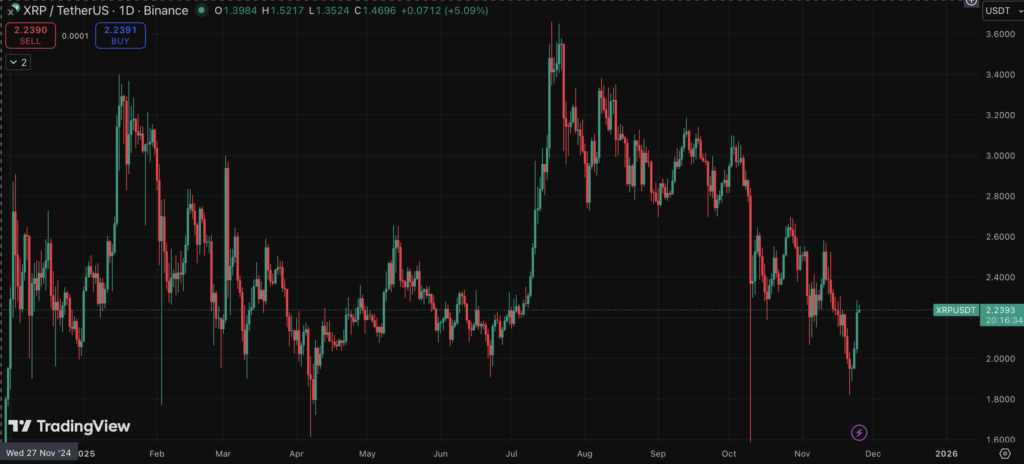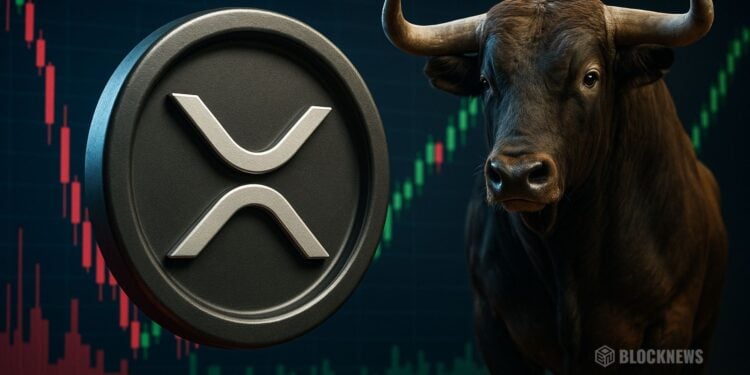- XRP dropped almost 40% in four months, underperforming BTC and ETH as ETF delays, profit-taking, and high Treasury yields drained momentum.
- Ripple’s legal victory, growing sidechain development, and pending spot ETF approvals still position XRP for meaningful long-term catalysts.
- If rates fall and Ripple’s banking ambitions advance in 2026, analysts say XRP could rebound sharply and potentially push toward new highs.
XRP has been through a rough stretch lately, slipping almost 40% over the past four months and badly underperforming crypto heavyweights like Bitcoin and Ethereum. BTC dropped around 23% in that same window, ETH about 16% — so XRP clearly felt the pressure harder. The big question now is why the token unraveled so fast… and whether 2026 offers any shot at a real comeback.
Why XRP Doesn’t Fit the Bitcoin–Ethereum Mold
XRP has always been a strange one in the crypto lineup. It’s not mined like Bitcoin, and it isn’t a typical proof-of-stake token like Ethereum either — so you can’t stake it for yield. It also doesn’t natively support smart contracts, meaning developers don’t build dApps directly on XRP the way they do on ETH or Solana.
Instead, Ripple Labs minted the entire 100 billion XRP supply long before launch. The company held 80 billion of those tokens at the start and still controls almost half today. Critics constantly point to this as a centralization problem: “how can a coin be decentralized if a single company owns that much of it?” They also argue that because XRP was pre-minted and doesn’t run on PoW or PoS, it doesn’t behave like a “real” cryptocurrency.
Ripple’s angle has always been different anyway. XRP exists as a fast bridge currency for payments — not digital gold, not a smart-contract supercomputer, just global settlement rails.
And that model created its own headaches. Ripple sold XRP to fund business growth, which brought the SEC knocking in 2020. The lawsuit pushed major exchanges to delist the token for years. Only in 2025 did the ordeal finally end, with Ripple paying a hefty fine but avoiding the worst outcomes. XRP was re-listed. ETF applications flooded in. One fund — the REX-Osprey XRP ETF — even launched early using a creative 1940 Act structure to get past the long SEC backlog.

Why XRP Lost Momentum After Hitting New Highs
After the lawsuit ended, XRP roared back to life. It rocketed from $0.31 lows in mid-2022 all the way to $3.65 in July 2025, its first new all-time high in years. Falling interest rates, social-media hype, and the classic fear-of-missing-out effect poured fuel on the rally.
But then everything froze up. XRP stalled for three main reasons:
• ETF approvals kept getting delayed — the 2025 U.S. government shutdown pushed filings deeper into limbo.
• Traders took profits aggressively after a three-year rally, draining momentum.
• Treasury yields stayed weirdly high, making risk-on assets like crypto less appealing while investors parked funds in safer debt.
Once that macro pressure hit, XRP simply didn’t have the narrative strength of Bitcoin or the developer ecosystem of Ethereum to keep climbing.
Can XRP Recover in 2026?
It might look gloomy in the short term, but XRP isn’t out of the race. A few catalysts could flip the script if they line up next year.
The first is ETF approval. Once the SEC finally clears spot XRP ETFs, the asset could benefit from the same type of inflow stability Bitcoin saw earlier in the cycle. That alone could help smooth out volatility.
Second, the XRP Ledger is expanding through Ethereum-compatible sidechains. It won’t suddenly turn into a full-blown smart-contract hub, but it gives developers more ways to plug into XRP’s payment network — and more utility rarely hurts.
Ripple also filed for a U.S. bank charter in 2025. If approval happens sometime in 2026, the company would gain a regulatory foothold that very few crypto firms have. That could dramatically accelerate adoption of XRP as a settlement and liquidity tool. It may also tie into Ripple’s stablecoin RLUSD, which targets international users who need dollar exposure without direct access to USD banking.
Of course, macro conditions still matter. If the Federal Reserve keeps cutting interest rates and Treasury yields finally cool off, risk assets like XRP could catch a bid again.
So while the end of 2025 may stay choppy — maybe even messy — the path to a recovery in 2026 isn’t far-fetched. With ETF clarity, proper banking rails, and a better rate environment, XRP could easily find its feet and push toward new highs once more.














